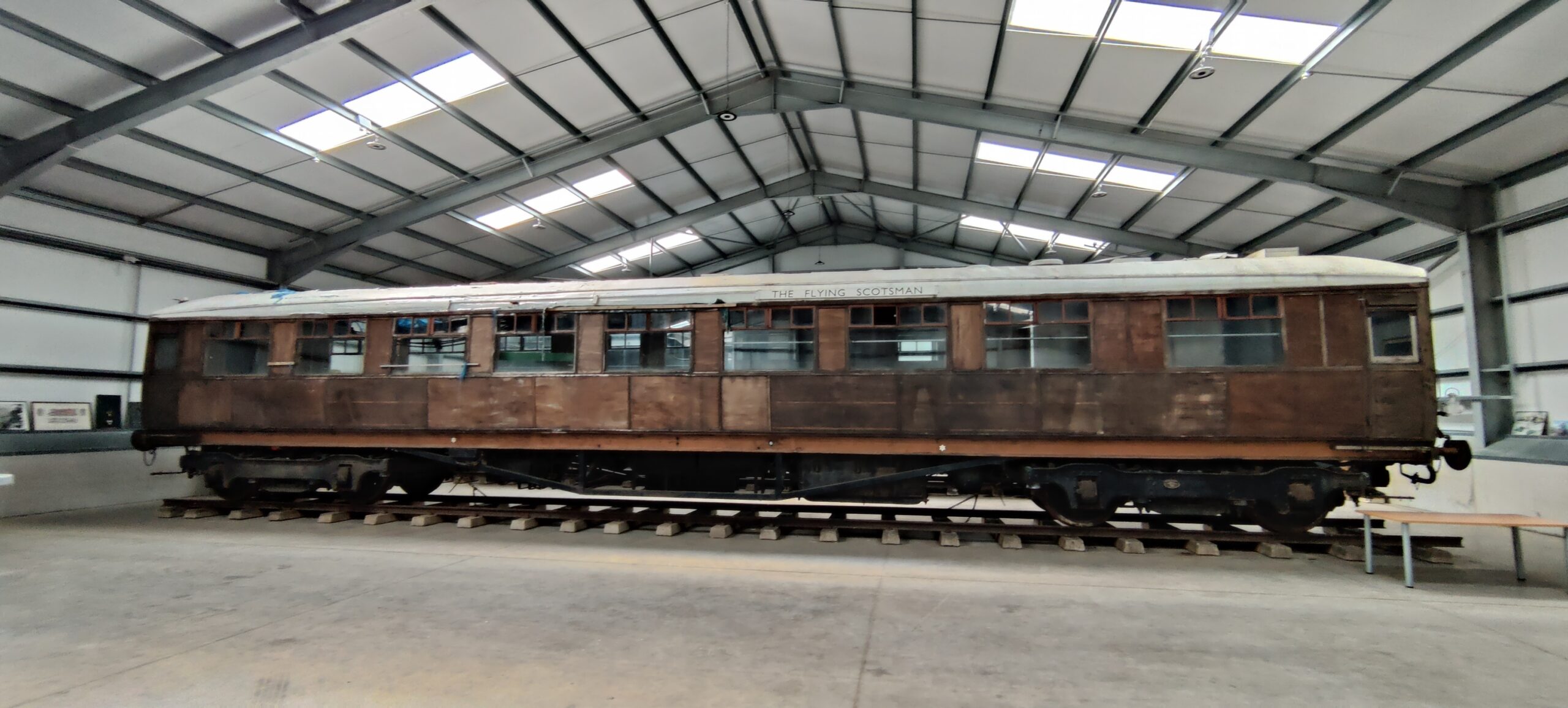
Buffet Lounge Car No. 1852 History
Buffet Lounge Car No. 1852 was one of only two such vehicles built in 1938 at Doncaster Works for the new ‘Flying Scotsman’ train and has been owned by the Society since 1966.

The Society owns ex-LNER pressure ventilated Buffet Lounge Carriage No.1852. This was built at Doncaster in 1938 to Diagram 258 for one of two new sets for the ‘Flying Scotsman’ service. The Buffet Lounge Carriage for other set was No.1853. British Railways rebuilt both vehicles internally in 1959, and No.1852 was withdrawn in 1965 as NE1852E. With a length of 66ft 6in they were five feet longer than the standard LNER main line vehicles and were to the full 9ft 3in width. As built they each weighed a hefty 44 tons 6 hundredweight.
During the 1930s the LNER went to exceptional lengths to produce a luxury environment in their principal expresses. The new 1938 sets replaced the stock used for the first-ever non-stop ‘Flying Scotsman’ introduced on 1st May 1928. The 1928 sets included some standard carriages built for the service in 1924 augmented by new restaurant articulated triplets, famed for their Louis XIV interior décor. The sets also included a hair-dressing saloon and ladies’ retiring room. The 1938 ‘Flying Scotsman’ sets removed the hairdressing facility and followed the 1937 acceleration of the non-stop service that reduced the summer journey timing to seven hours.
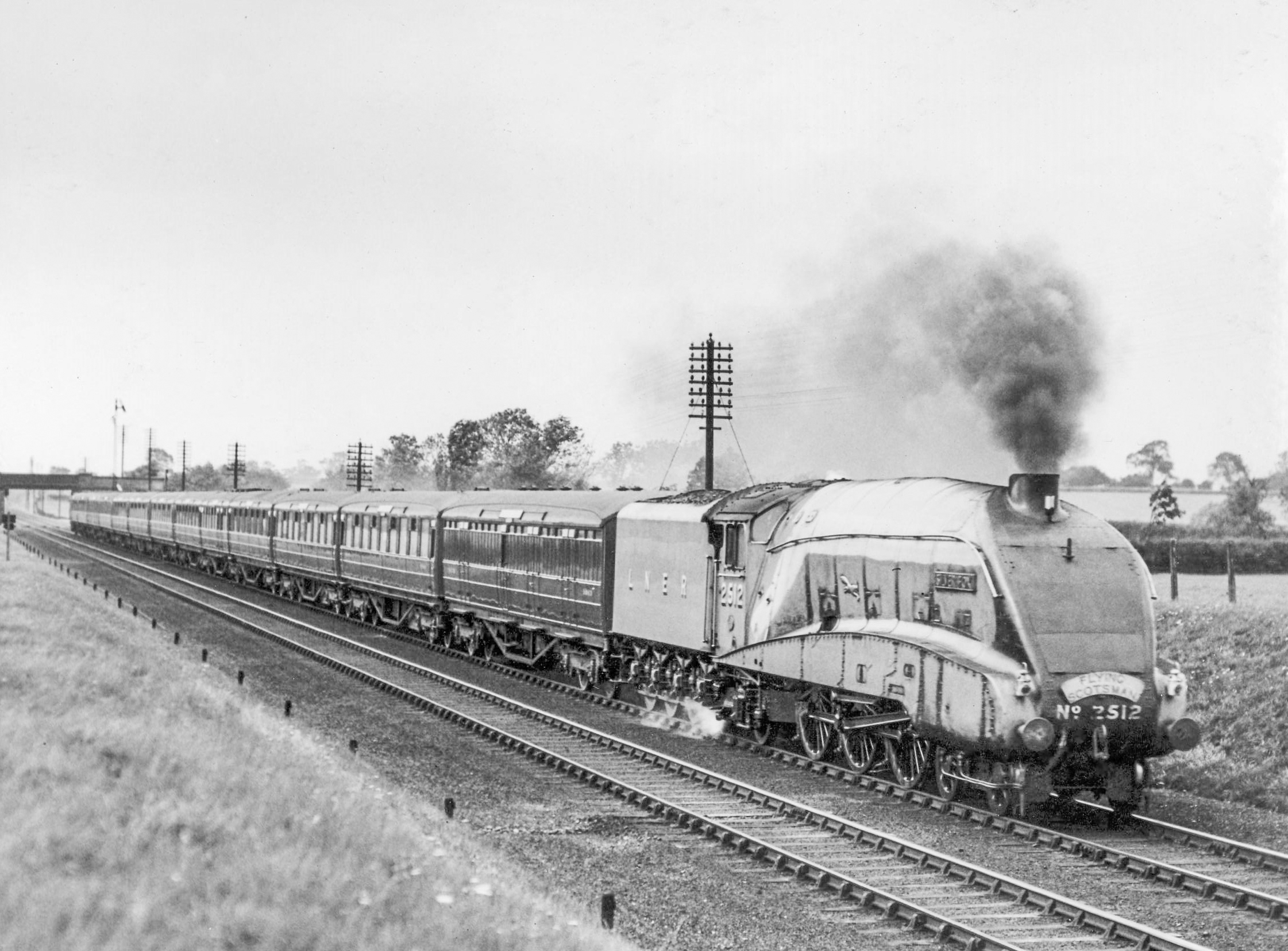

The 1938 building programme, approved in October 1937, included 30 vehicles for the two ‘Flying Scotsman’ sets. The trains were to be run as fourteen-coach formations during the winter timetable. In the summer the formation was reduced to twelve carriages for Edinburgh and Aberdeen passengers only, and the ‘Junior Scotsman’ ran as a relief to the non-stop calling at the principal intermediate stations. The winter train weighed some 504 tons comprising brake third; composite (Glasgow); locker composite (Perth); three thirds; buffet lounge car; triplet restaurant; first (Edinburgh); third; brake third.
All the 1938 vehicles had double glazed windows and were equipped with Stone’s pressure ventilation and heating, providing an early form of air-conditioning. A high degree of sound proofing was provided with insulating materials in the sides and roof and under the floors. Exteriors followed earlier end-vestibule standard designs but had alternate windows on the corridor sides with sliding vents. During the 1939-45 War steam heating radiators were fitted. Interior finishes were of rexine with chromium-plated fittings (following the styling of ‘The Coronation’, ‘The West Riding Limited’, ‘The East Anglian’ and ‘The Hook Continental’ sets).
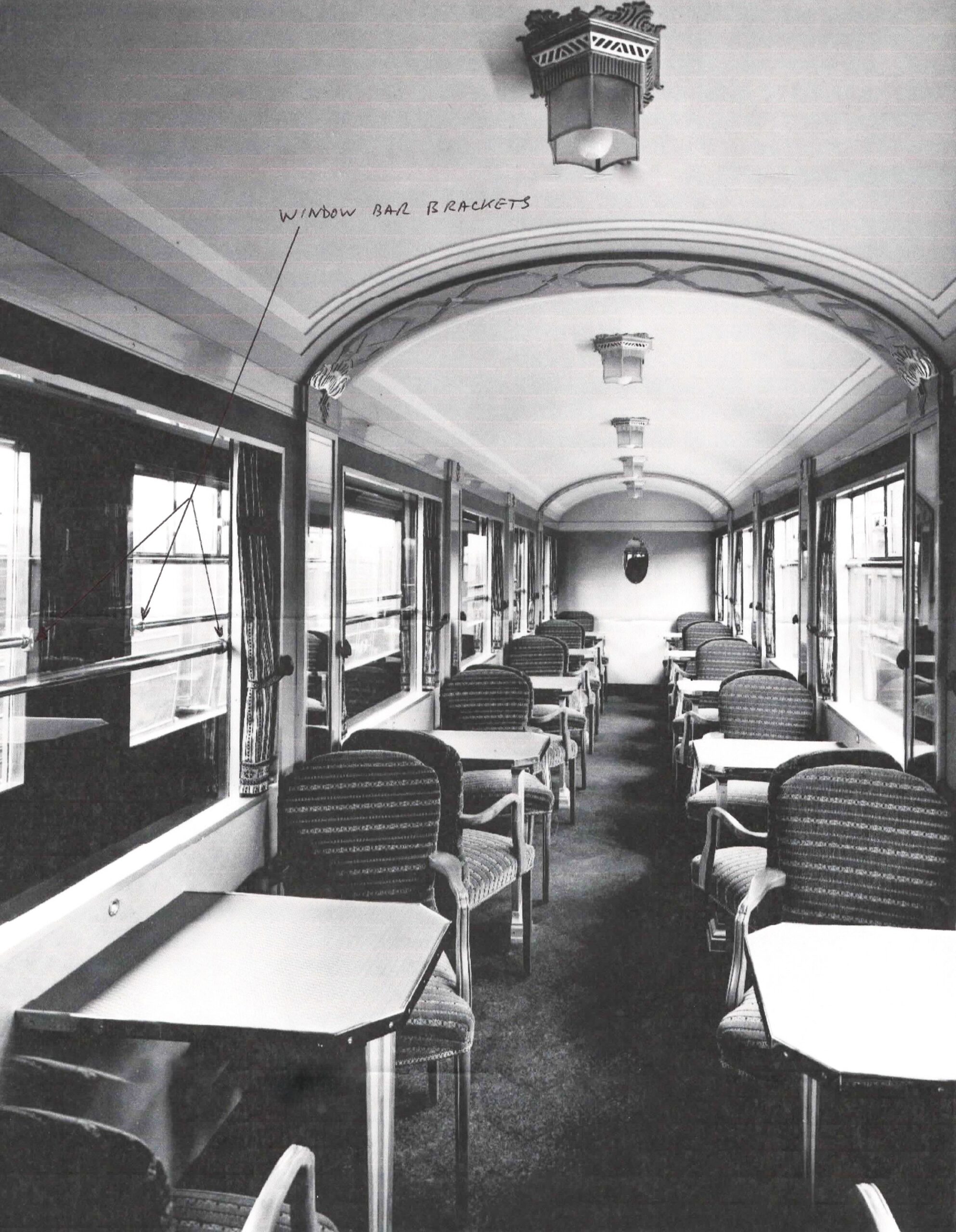
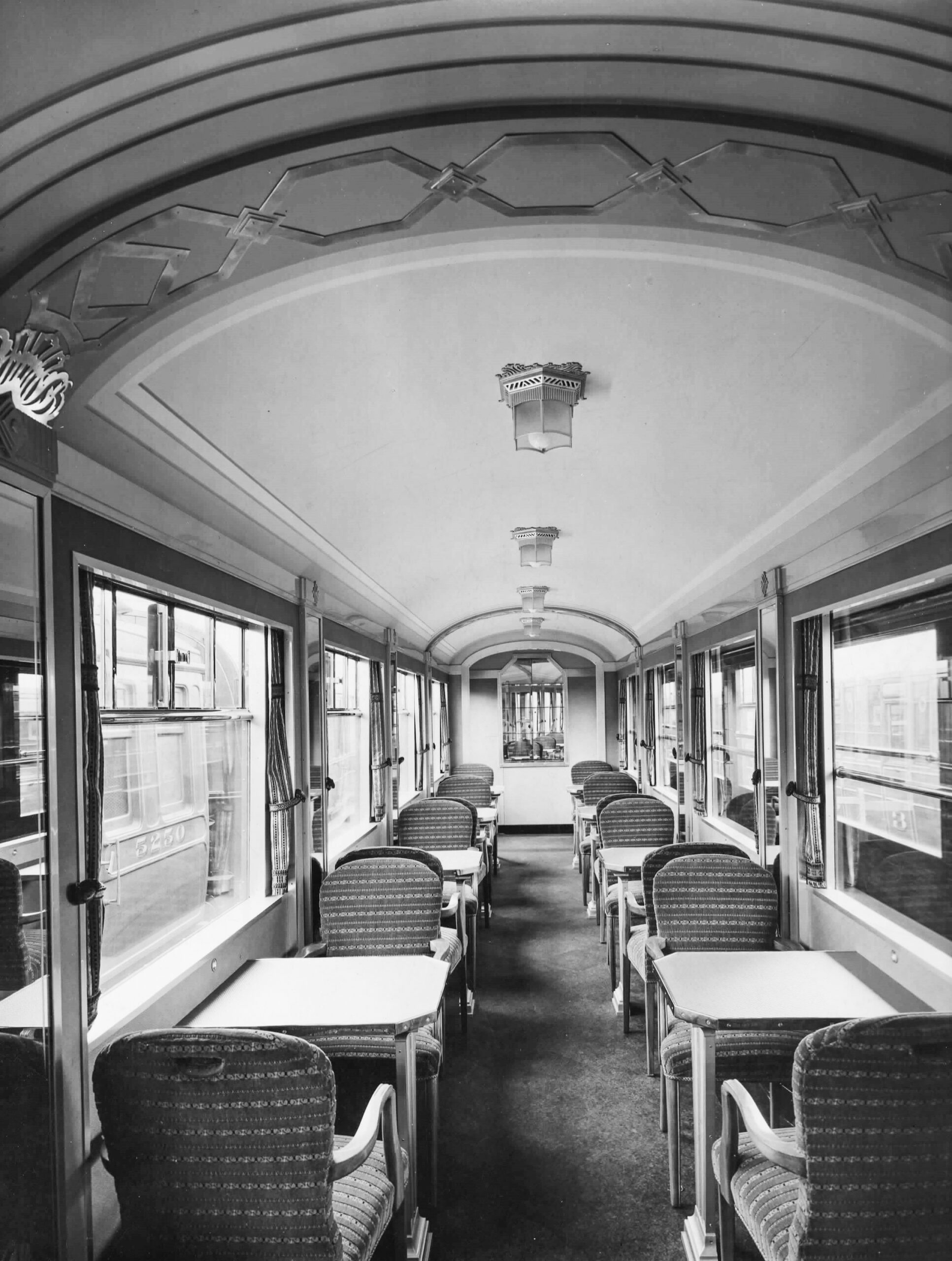
The Buffet Lounge Carriages at 66ft 6in were exceptionally long vehicles and had a unique layout. Their elegant and novel interiors originated from an American concept. The centrally placed saloon had loose chairs for twenty passengers. These were seated in pairs at ten tables, each table being adjacent to a window, on one side looking into the corridor and on the other giving a view out of the vehicle. At one end of the saloon was a showcase on the wall that backed onto the pantry, which was just under 12 feet in length. This pantry was equipped with modern appliances including an electric grill, coffee machine, toaster, refrigerator and ice-cream cabinet. This enabled passengers to obtain a service of snacks and ice-creams throughout the journey. Beyond the pantry, and separated from it, was a beer cupboard in the small compartment that would normally be a toilet.
The other end of the carriage had a ladies’ retiring room, just over 12 inches in length. This was equipped with two wash basins, two chairs, a settee and appropriate mirrors and gave sole access to the adjacent ‘ladies-only’ toilet compartment. One of the vehicles was internally finished in a green and silver colour scheme, the other in rose pink. Each Lounge Carriage’s interior had a screen, glass-panelled in the saloon, providing a separate side corridor for through traffic.
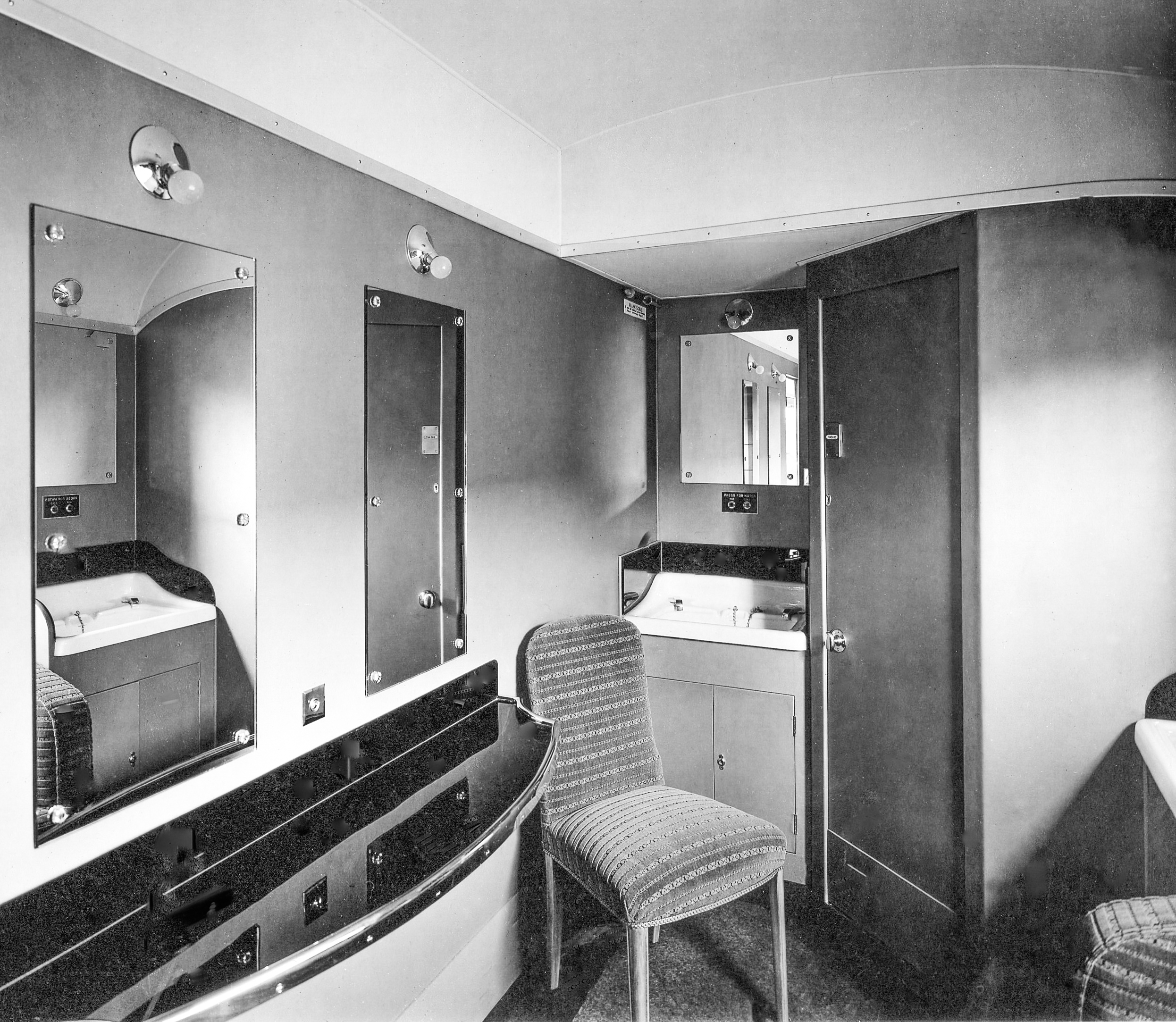
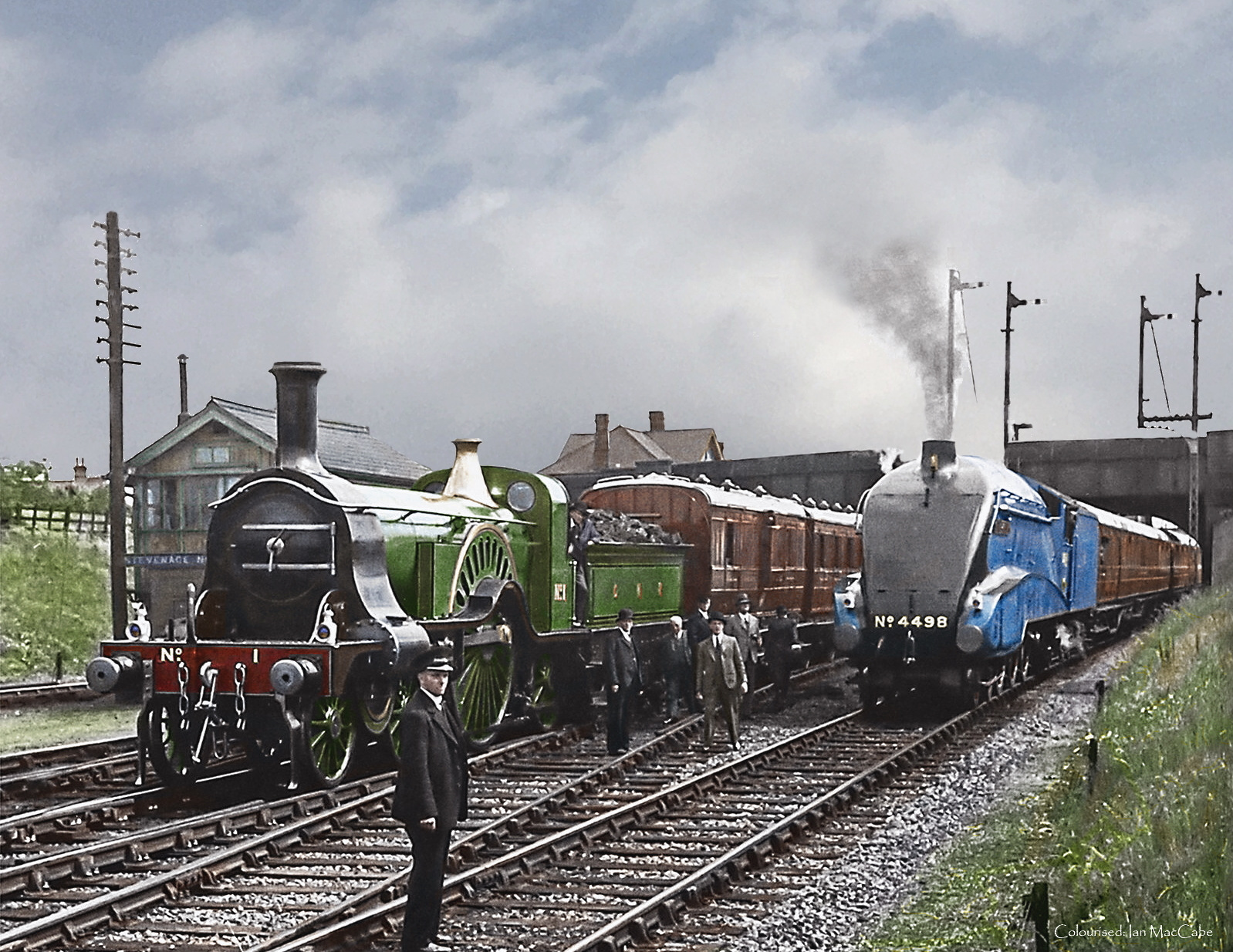
The 1938 stock with the Buffet Lounge Car was demonstrated on 30th June 1938 with a press run in a typical LNER-style blaze of publicity. Invited guests left King’s Cross in aged Howlden Great Northern six-wheeled coaches hauled by Stirling Single 4-2-2 No.1, which had been especially brought out its York museum retirement and overhauled. The passengers transferred at Stevenage into the handsome new ‘Flying Scotsman’ carriages, hauled from there to Grantham by Gresley’s hundredth Pacific, Garter Blue class A4 No.4498 Sir Nigel Gresley. The A4 then hauled the train on the return to King’s Cross touching 93 mph on the descent from Stoke. Gresley himself was a passenger on the press run.
With wartime the changed conditions ended the pristine glory of the new trains, although most of the carriages – apart from the Buffet Lounge Cars – remained in use on the ‘Flying Scotsman’ and other East Coast trains. By late 1948 all the 1938 stock had been displaced from the ‘Flying Scotsman’, and the carriages gradually dispersed to general service. The ‘Flying Scotsman’ service was equipped with the latest Thompson steel panelled stock, again with pressure ventilation. These vehicles could be distinguished from other Thompson stock by the extension of the body panelling over the solebars and the absence of roof vents.
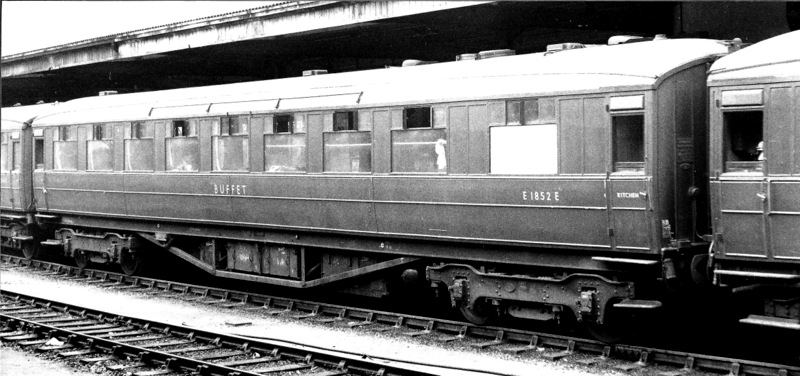
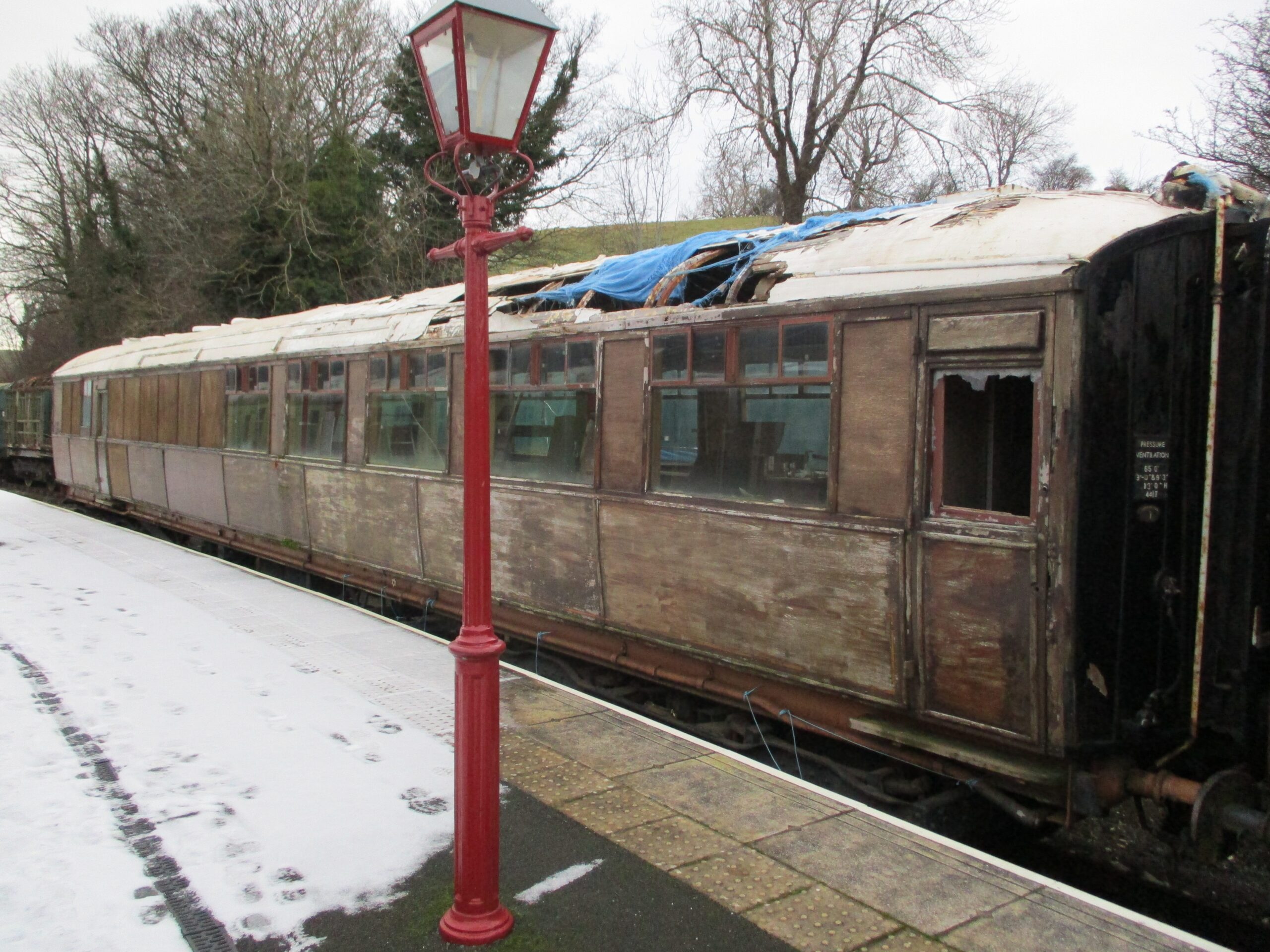
In 1959 the two Buffet Lounge Cars were rebuilt by British Railways with propane gas cooking equipment. They were also ‘modernised’ internally with garish combinations of plastic panelling and then used in relief and excursion workings. On its withdrawal in 1965, No.1852 was purchased by the then nascent Gresley Society for preservation and restoration to original condition. After a number of years stored in the open on the Great Central Railway, No.1852 was moved to covered accommodation at Kirkby Stephen East in February 2003, where it joined other LNER vehicles at various stages of restoration.
On its withdrawal in 1965, No.1852 was purchased by the then nascent Gresley Society for preservation and restoration to original condition. After a number of years stored in the open on the Great Central Railway, No.1852 was moved to covered accommodation at Kirkby Stephen East in February 2003, where it joined other LNER vehicles at various stages of restoration. In April 2023 No. 1852 was moved to covered accommodation on the farm of the Society’s President John Cameron at Balbuthie in Fife, Scotland. It is now awaiting restoration, which is subject to a Heritage Fund application.

